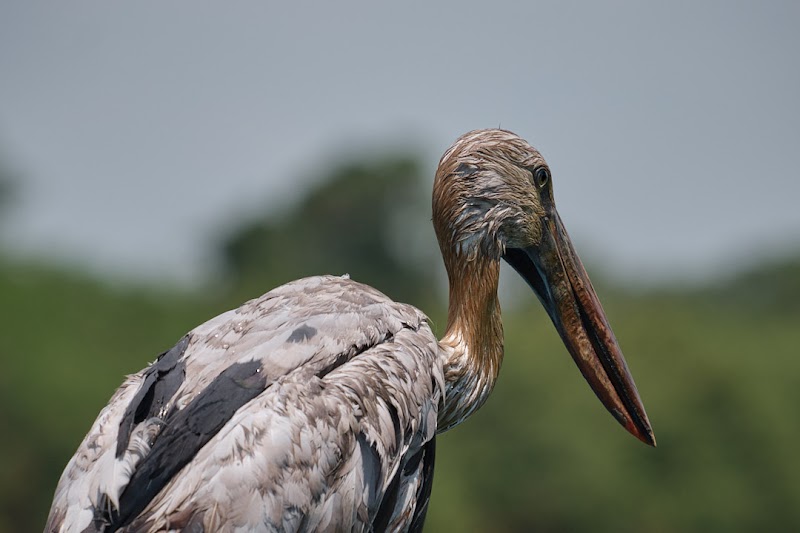
The Angkor Wat International Half Marathon invites runners to test their limits while running through history. This 21.1 km course in Cambodia’s Siem Reap melds ancient temple views with tropical challenge, offering an unforgettable race experience fortified by practical preparation.
Hydrate Frequently
The tropical climate demands vigilant hydration. Use water stations provided along the route but consider carrying a personal hydration pack for consistent fluid intake.
Choose Breathable Footwear
Opt for running shoes with good ventilation and cushioning to manage humid air and a mix of paved and dirt surfaces comfortably.
Start Early
Begin your run at sunrise or earlier to avoid peak heat hours, reducing fatigue and risk of heat exhaustion.
Acclimate to Humidity
Arrive a few days early to adjust your body to the local climate, improving your performance and comfort on race day.
Running History: The Angkor Wat International Half Marathon Experience
The Angkor Wat International Half Marathon unfolds at the break of dawn amid Cambodia’s most iconic landmark—Angkor Wat temple complex in Siem Reap. Spanning 21.1 kilometers, the route offers an extraordinary intertwining of history and endurance. As your feet meet the road, ancient stone faces and towering spires gaze silently overhead, a stoic audience to your effort. The course is flat but can test your stamina with tropical humidity and the sun’s early, insistent push.
Runners start from the shadow of Angkor Wat’s stone causeway, weaving past temple ruins, dense forested areas where the jungle seems to breathe and whisper challenge, and quiet village paths where locals cheer your determination. The terrain is firm and mostly paved, with some sections of packed dirt—choose shoes with solid grip and cushioning to handle potential damp patches after morning mist or rain.
Timing this race requires more than marking your calendar. October through December bring cooler, more comfortable temperatures, ideal for long-distance running. Start early to stay ahead of the midday heat. Hydration stations are spaced every 3 to 5 kilometers, but carrying your own water is recommended; the tropical air dares you to stay hydrated as it presses in with steady warmth.
While the race attracts seasoned athletes, it’s equally welcoming to casual runners eager for a unique experience. Training should focus on acclimating to humidity and maintaining steady pace on flat terrain. The excitement in the air is palpable: you’re not just running a race but moving alongside a story carved in stone, a land fiercely itself and inviting you to respect its rhythms.
In practical terms, bring lightweight, breathable gear, sun protection, and an early-rising mindset. Listen to your body's signals as you traverse the route that brushes history and nature into every step. Crossing the finish line, the swell of accomplishment is quickly touched by the awe of where you’ve run: a living monument and an adventure fused.
The Angkor Wat International Half Marathon is more than a race—it’s an active homage to human endurance in the face of timeless surroundings. Prepare well. Run thoughtfully. And seize the rare chance to trace your footsteps beside one of the world’s most powerful relics.
Nearby Trips
All Adventures
Boat Charters
Water Activities
Adventures near Siem Reap, Cambodia
Discover the unique and memorable adventures that make Siem Reap, Cambodia special.
Frequently Asked Questions
What is the course like for the Angkor Wat Half Marathon?
The course is primarily flat with paved roads and some packed dirt sections. It winds through the Angkor Archaeological Park, passing stunning ancient ruins and shaded forest areas, providing a varied but manageable terrain for runners.
How should I prepare for the climate during the race?
Train in warm and humid conditions if possible. Hydrate consistently before and during the race, wear lightweight, breathable gear, and acclimate to tropical temperatures by arriving at least a few days early.
Are there water stations along the race route?
Yes, stations providing water and electrolyte drinks are spaced every 3 to 5 kilometers to help runners stay hydrated, though carrying your own water can be advantageous.
Can beginners participate in this marathon?
Absolutely. Many first-timers participate, but it’s important to build endurance and practice running in heat and humidity to ensure a safe and enjoyable experience.
What cultural highlights can runners expect along the course?
Runners pass through historic Angkor Wat temples and smaller ruins, many dating back to the Khmer Empire. The route links sacred architecture with living villages, offering a glance into Cambodian heritage and community life.
What environmental considerations are involved in the event?
The race organizers emphasize minimizing impact on the archaeological sites and wildlife habitats. Participants are encouraged to avoid littering and respect restricted areas to preserve the park’s integrity.
Recommended Gear
Lightweight Running Shoes
Essential for comfort and support across pavement and dirt. Breathability helps manage humidity.
Hydration Vest or Belt
Carrying your own water ensures consistent hydration amid tropical heat.
Moisture-Wicking Clothing
Keeps sweat away from skin, helping maintain comfort and reducing chafing during long distances.
Running Cap or Visor
Helps shield your face from early sun rays while allowing airflow.
Local Insights
Hidden Gems
- "Preah Khan Temple – a quieter, atmospheric site with overgrown trees entwining stone ruins"
- "Local village markets near the race route where runners can find authentic Khmer snacks"
Wildlife
- "Tropical birds like the Asian Koel call persistently during early morning runs"
- "Occasional sightings of monitor lizards sunning near shaded temple pools"
History
"The marathon traces paths once traversed by the Khmer Empire’s architects and worshippers, highlighting Angkor Wat’s position as a 12th-century religious and political center."
